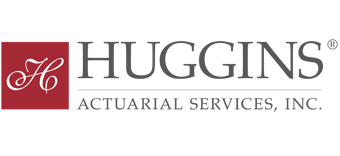Capital Crunch:
What Captives Need to Know About Economic Capital Modeling
Written by: Alan Pakula, ACAS, MAAA and Todd Dashoff, ACAS, MAAA, ARM
What is economic capital?
Economic capital is defined as “the amount of financial resources that an institution must theoretically hold to ensure the solvency of the organization at a given confidence level and given the risks that it is expected to take”1. This standard should be recognized as the capital that is needed within a company to achieve its business objectives, not as the baseline amount of capital to be held in order to stave off regulatory action.
Why should a captive insurance company care about economic capital?
Economic capital should be an essential part of strategic and tactical decisions for a captive insurer. It affects many areas of captive insurance company operations including risk appetite and limit setting, measurement of performance, and investment philosophy. Inadequate funding can lead to ratings downgrades by rating agencies and possible regulatory actions.
One of the main functions of the captive insurance company’s board of directors is the oversight and management of risk. This risk exposure can be highly variable and difficult to predict. For example, with the implementation in the US of the Patient Protection and Affordable Care Act, which is also known as Obamacare, captives formed to retain a group’s medical malpractice exposure are now faced with the additional uncertainty of the effect that Obamacare will have on the medical malpractice environment and on future loss costs. In turn, these will have an effect on the membership of the captive. The captive’s board of directors need to perform their own forward looking self-assessment review of the risks that may affect the captive and the concomitant existing solvency needs and the adequacy of capital resources.
In 2008, the National Association of Insurance Commissioners (NAIC) looked to strengthen its regulatory framework by studying the European regulators’ new ORSA (Own Risk Solvency Assessment) requirement, a part of Solvency II. ORSA originated with the UK insurance regulator, the Financial Services Authority (which is now known as the Financial Conduct Authority). In 2005, under the Individual Capital Adequacy Standards Regime or ICAS, the FSA required insurers to evaluate their own risks and report the amount of capital required to support those risks. In practice, the FSA discovered that most companies were treating the ICAS as more of a compliance exercise instead of an integral part of the insurer’s risk management. The FSA wanted to have the internal capital assessment process integrated into the business operations.
The NAIC determined this approach would represent a more effective framework for the US, and in 2012 it adopted the ORSA Model Act. The NAIC expects to have the ORSA Model Act ready for implementation by January 2015. The ORSA Act will replace the current regulatory framework for captives which, at least in the US, is in the process of moving from review based primarily on reserve adequacy as it relates to overall company solvency, to a risk-adjusted approach that seeks to determine those components of the captive’s operations that may have the greatest effect on solvency, and then checks to see whether controls are in place to moderate or eliminate those risks.
ORSA, as indicated by its title, is designed to require all insurers, including captives, to perform an internal assessment of the risks that could affect the solvency of their particular operation, and to stress test their operations to determine whether there could be an unforeseen set of circumstances that could cause the captive to suffer a loss of capital that would impair its solvency. If such impairment could occur within the required projected time span, the captive will be required to come up with a plan to modify its operations to eliminate the risk. This might take the form of reducing or shifting the amount of business written within a given line or state, or the implementation of a rate increase, or stricter underwriting.
While the ORSA requirements will initially only apply to entities above a rather high written premium volume, expectations are that the qualification level will be reduced over time. Even if a captive’s total premium is far below the cutoff, it is still advantageous to perform such an assessment in order to be sure that there are no ‘land mines’ that could seriously affect the ability of the captive to continue to operate and to expand those operations to the benefit of its owners.
In addition to state insurance departments, AM Best Company has recently indicated that it will be including an assessment of company-specific risk in a modification of its BCAR (Best’s Capital Adequacy Ratio) formula. AM Best plans to tie the probability of default and the required amount of capital to the financial ratings it assigns to a company’s balance sheet strength. A company’s rating will be subject to greater variation from the majority of firms of similar composition if it exhibits a higher risk profile, excessive earnings variability or is involved with comparatively riskier business segments.
For those captive insurers seeking to maintain a high rating, perhaps due to a requirement from their reinsurer or fronting carrier, it will behoove them to assess their inherent risk and develop enterprise risk management tools that will allow them to focus on those facets of their operation that involve the most risk and come up with ways to reduce that risk, so that their balance sheet is not subject to excessive fluctuation even under unforeseen circumstances. The primary tool to accomplish this is economic capital modeling.
How does economic capital modeling work for a captive?
Economic capital modeling (ECM) is essentially a probability-based scenario generator for determining the future financial results of an insurance organization. The usual starting point is the modeling of all of the existing and/or proposed exposures of the captive’s business through the operational components of insurance, reinsurance, claim and expense payments, and the investment of funds. Detailed information about the insurer’s operations is entered into a modeling package and the package generates equally likely alternate versions of the financial statements for a number of prospective years. Key risks modelled in ECM include underwriting, reserve, natural catastrophe, asset, and reinsurance credit risk. A key component of the model includes credible scenario and stress testing that measures the possible variability of the future results.
What data is needed to run the model?
Several types of data are needed. Balance sheet inputs include assets (cash, bonds, common stock, other asset classes, surplus) and liabilities (loss and loss adjustment expense reserves by line or sub-line and payment patterns for existing reserves, unearned premium reserve, and other liabilities). Line of business inputs include direct written premium, underwriting expenses, earnings patterns, and claims counts. Reinsurance inputs include reinsurance contract terms along with specific catastrophe reinsurance terms, reinsurance catastrophe modeling results, ceded premium, ceded reinsurance attachment point, and ceded reinsurance limit.
For a captive, which frequently may have a relatively low retention level, the terms of its reinsurance treaties have particular importance in the model. If loss experience worsens in the coming periods, depending on the relationship of the average claim size to the captive’s retention, there may be a significant worsening of loss experience with a corresponding decrease in the available capital of the captive. In addition, depending on the particular perils written by the captive, management should investigate the potential for a single catastrophe to have a negative effect on multiple lines of business, such as property, automobile physical damage and homeowners.
What does an economic capital model report output look like?
An economic capital model will produce pro forma financial statements including balance sheet and income statement over a number of future years. It should also calculate and display cumulative probability density functions. These functions can compare results based on differing assumptions and include the effect of catastrophe losses. The functions show the value at risk and tail value at risk (TVaR). The latter is a weighted estimate of the losses in excess of a given probability, such as one in a hundred or one in a thousand. While such losses are by the nature extremely infrequent, good management will still examine the TVaR. If such a loss were to occur, it could result in a loss of capital to the point where the captive might be unable to continue in operation.
The key to success will be the creation of a timely and understandable flow of information across all facets of the captive’s operation that will enable management and the board of directors to make timely and appropriate decisions, and to take appropriate remedial action when it is required. Captives that accomplish this should flourish, even in difficult economic times, and will find themselves able to react more quickly to any changes that may occur in the future.
1 James Lam, Enterprise Risk Management: From Incentives to Controls, John Wiley & Sons, 2003

